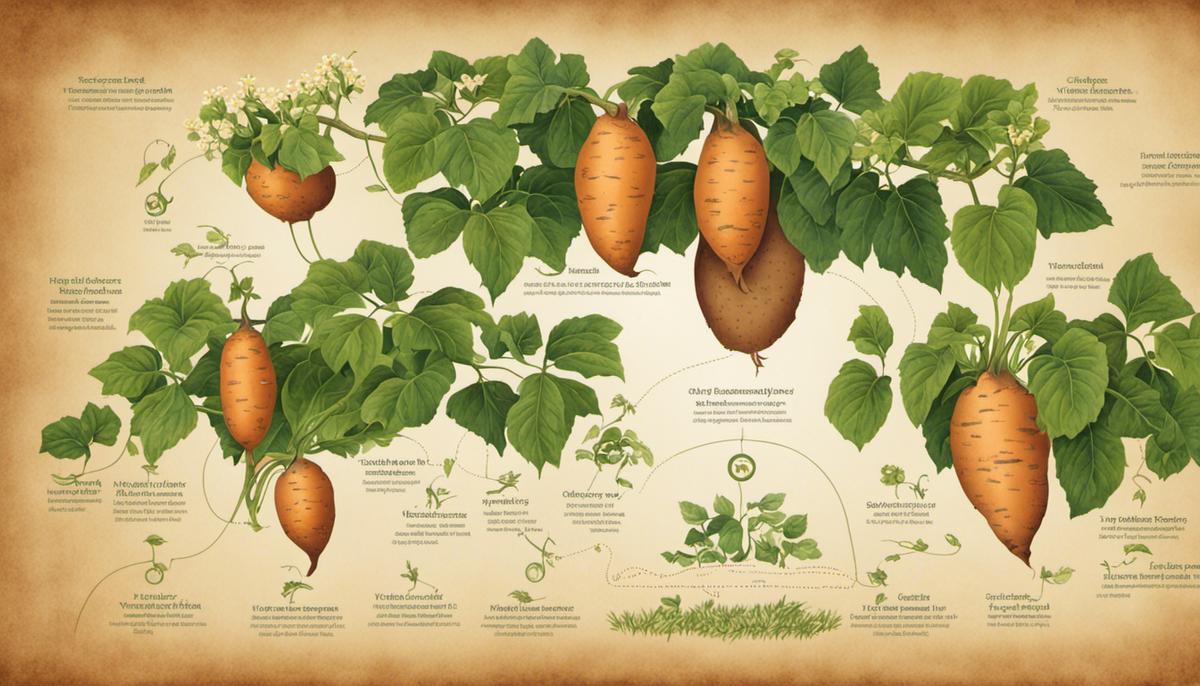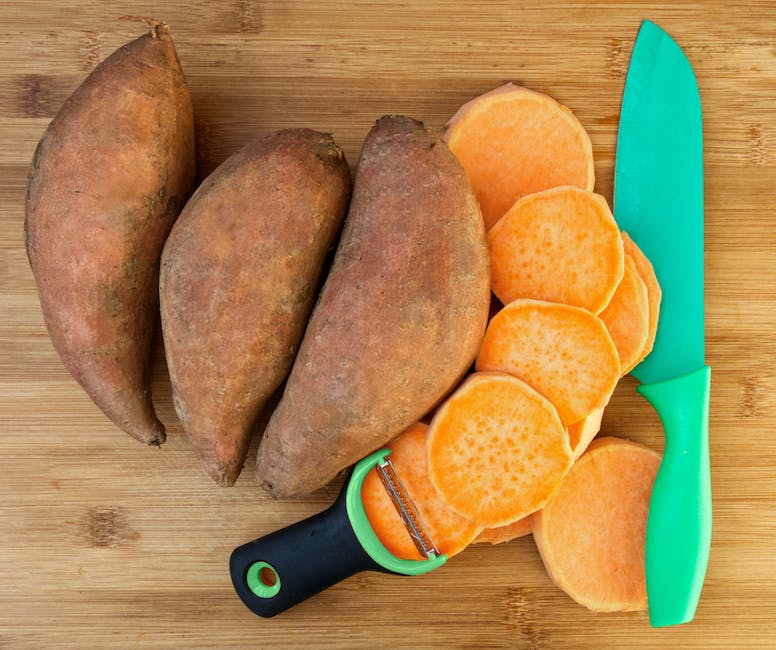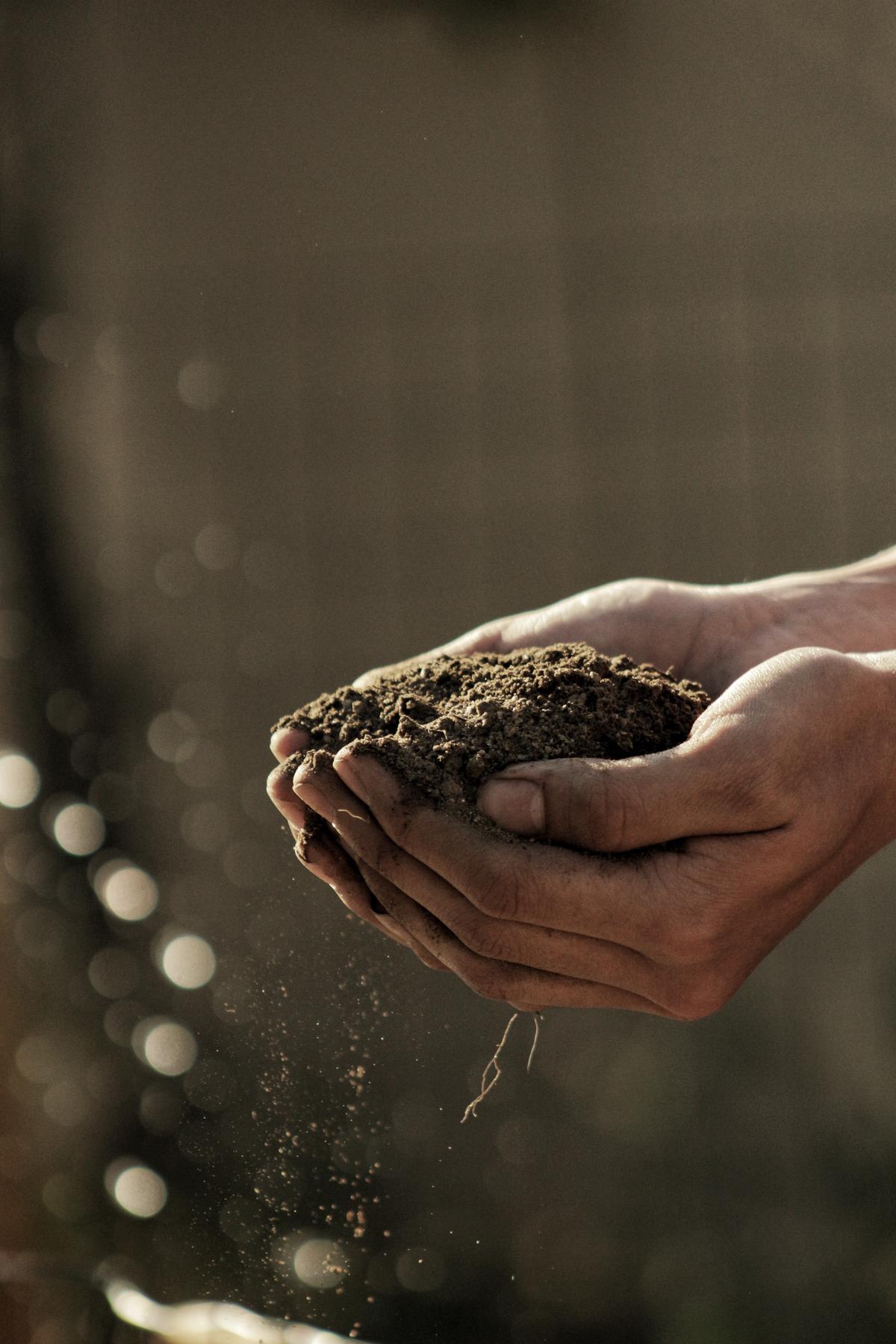Harvesting Sweet Potatoes: The Right Time and Technique

Harvesting sweet potatoes at their optimal point of maturity is a rewarding experience for any gardener, novice or expert. A perfect blend of knowledge about the plant’s life cycle intertwined with acquiring practical skills to understand both the physical changes and the readiness of the potato can ensure a fruitful harvest. This starts with comprehending the growth pattern of sweet potatoes, where stages such as vine development, the flowering stage, maturation, and root development offer important clues.
Knowing the Life Cycle of sweet potatoes
Title: Harnessing the Growth Cycle of Sweet Potatoes for a Bountiful Harvest
Sweet potatoes, unlike their conventional potato counterparts, take root via vines, providing an entirely different growth pattern that affects the timing of harvest. Understanding this unique cycle is key for hobbyist gardeners aiming to garner a bountiful harvest.
Sweet potatoes are a warm-season crop, typically planted in the early spring. As the days lengthen and the soil temperature heats up, the sweet potato slips (rooted cuttings) are ready to hit the ground. Common practice suggests planting sweet potato slips after the last spring frost, when the soil temperatures maintain a steady warmth of about 65 degrees Fahrenheit.
The initial growth phase of sweet potatoes is about leaf and vine production. During the first 70-85 days, the plant focuses its resources primarily on producing the sprawling vines that define a sweet potato field. Enthusiastically spreading up to ten feet in all directions, these vines not only establish a potent visual presence but lay the groundwork for the actual tuber development.
Following the initial leaf and vine growth, the next phase involves the bulking of the tubers – the underground star of the show. As the days start to shorten and the nights cool, the plant’s energy shifts from the vine growth to the tuber. This phase usually occurs 85-100 days after the initial planting.
So, the question arises – when is it best to harvest sweet potatoes? Traditional wisdom holds that sweet potatoes should be harvested just before, or immediately after, the first fall frost – roughly 100-140 days after planting. This allows for maximum tuber growth while mitigating the risk of frost damage. Gardeners should look out for leaves that turn yellow as a major indicator that the sweet potatoes are ready to be dug up.
However, experiment and experience suggest that there isn’t a hard and fast rule. Sweet potatoes can be harvested any time tubers have formed and are large enough to eat. The longer the potatoes stay in the ground, the larger they grow and the higher the vitamin content becomes.
So, part of the joy in growing sweet potatoes is in the judgement of the harvest time! Will you catch a few early, smaller potatoes for a summer dish? Or will you wait patiently, and hopefully, for the late autumn harvest of plump, nutritious tubers? It’s the gambler’s call in this undeniably fascinating hobby. Remember, every harvest is a learning for the next, offering room for improvement – which is part of this hobby’s charm. Happy gardening!

Observing Physical Changes on the plant
Negating the Guesswork: Spotting the Exact Time to Harvest Sweet Potatoes
Exploring the sweet and savory world of sweet potatoes has been a delight. It practically uncovers a piece of you that loves a great challenge – starting at the planting phase, through the growth phases, up to the much-anticipated moment – the harvest. Harvesting this nutritious offering from nature doesn’t rest entirely on the pages of a calendar. It depends greatly on understanding the plant itself and recognizing physical changes that hint at the perfect time. So, let’s cut to the chase and divulge, in detail, these significant tell-tale signs your sweet potato plant gives you when it’s time to harvest.
- Yellowing Vines and Foliage: One trustworthy cue signaling that the sweet potato tubers are ripe for harvest is the state of its foliage. As time passes, the green, lush leaves commence to yellow, wilt, and eventually die off. A declining foliage is an excellent indicator that the plant’s resources are ploughing into the tubers, implying that they are ready for collection.
- Presence of Soil Cracks: An interesting spectacle in the world of sweet potato cultivation is that the soil ‘speaks’. As the tubers grow and swell within the earth, it forces the soil to crack as they run out of room below. These noticeable cracks near the base of the plant indicate that a beautiful bounty of sweet potatoes is right beneath, ready for the taking.
- Days to Maturity: Each sweet potato variety comes with a pre-established maturity date. It is not an exact science, but generally can be between 90 to 170 days after planting. If the vines and foliage remain green and healthy, consider this time frame. While timing isn’t the only factor, it is useful as a guideline to figure out when harvest time could be.
- Countdown from First Frost: As outlined in the beginning, constant vigilance around the time of first fall frost plays a crucial role. While some cultivators might prefer to harvest their produce before or after this period, it’s pertinent to remember that any exposure to freezing temperatures in the soil can significantly damage the tubers. Thus, once a forecast is out for the first frost, it would be wise to harvest the sweet potatoes within that week.
- Expose a Tubers: One of the surest ways to decide on harvest time is to do a little snooping below the soil. Gently unearth the soil surrounding a vine to expose one or two tubers. If they have reached a satisfactory size and the skins don’t bruise easily, it may be time to roll up those sleeves and start digging out the fruits of your labor.
Every new season in the sweet potato garden yields a fascinating learning curve. Revel in the growth of these plants, as each phase from slip to tuber, encapsulates a marvel of its own. Every vine that turns yellow, every crack in the soil, every frost forecast, will pulse with anticipation, nudging you a step closer to the lofty day of harvest. Every sweet potato lifted from the earth is a testament to your hobby-filled devotion, culminating in a feel-good triumph that will carry you into the next planting season. Now, armed with this knowledge, await those tell-tale signs and let your gardening success story begin to reveal itself.

Testing soil and potato readiness
Heading into the detail, let’s now delve into how to test the soil and the sweetness of the potatoes to ensure they are ready for harvest.
The first step in this process involves conducting a pH soil test. Sweet potatoes prefer a slightly acidic to neutral soil. Ideal pH levels are typically between 5.5 to 6.5. You can quickly check this using a home pH testing kit. Maintaining your soil’s pH within the sweet potato’s preferred range will provide more nutritious, quicker-growing crops.
Testing for fertility, likewise, is particularly crucial. Soil fertility tests can quickly be done to ascertain the level of essential nutrients such as nitrogen, phosphorous, and potassium in the soil. Often, you’d find that sweet potatoes grow best in well-drained sandy or loamy soil, rich in all these nutrients.
Upon ensuring the soil is ideal, let’s tangent to yet another critical point on the trail to a bountiful harvest… the potato itself. Nothing quite tells of a sweet potato’s readiness for harvest like the tubers’ size and hardness. Roll up your sleeves, dig a little around an exposed tuber with your hand. If the sweet potato is roughly the size of your fist and has a firm exterior, you’re in luck! This is a reliable sign of a ripe sweet potato.
But wait, what about the sweetness of the potato, you ask? Well, sweet potatoes develop their distinctive sweetness through a process known as curing. After you’ve harvested your potatoes, they need to be cured for approximately 10 days in a humid area at a maintained temperature of around 80-85°F (around 27-30°C). During this process, any scratches on the tubers heal, and the high heat helps to convert the potato’s starches into sugars – hence, the increased sweetness.
Throughout this process, remember to be patient. Like any great hobby, the delight in growing sweet potatoes comes from nurturing them and watching them grow over a season. Whether you’re an old hand at sweet potato cultivation or sowing your first crop, the marvel of reaping a harvest spurred by your own hands never fades. So, test, try and conquer. Happy gardening!

Photo by gabrielj_photography on Unsplash
Once the signals are clear, be it through changing leaf colors or withering vines, it’s crucial to test the readiness. Methods such as probing the soil delicately to measure the size of the sweet potatoes or tasting a sample to confirm peak sweetness can be employed. Knowing when to harvest requires an understanding of these elements, and the ability to integrate science with practical skills. This knowledge can make the difference between an average harvest and a truly exceptional one, allowing you to enjoy the sweetness of your labor in every bite.



